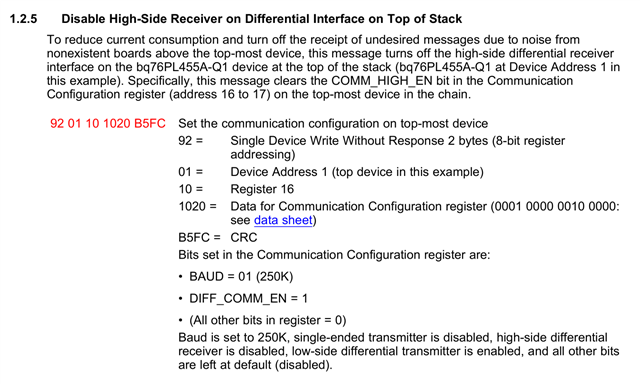Hello there,
I am testing the Auto-Addressing procedure from the "SLVA617A–November 2014–Revised May 2015" document. I am performing the tests on 2 serially connected BQ76PL455A-Q1 based devices. My problem is that the second device is not always recognized after the wake up. I cannot find any reason for that. What I have noticed is that after I power recycle the 1st module (the one connected to the master MCU) and redo the procedure, both slaves are discovered correctly, so the problem lies somewhere within the 1st module.
What are the common problems when designing this part? I would appreciate all feedback.



